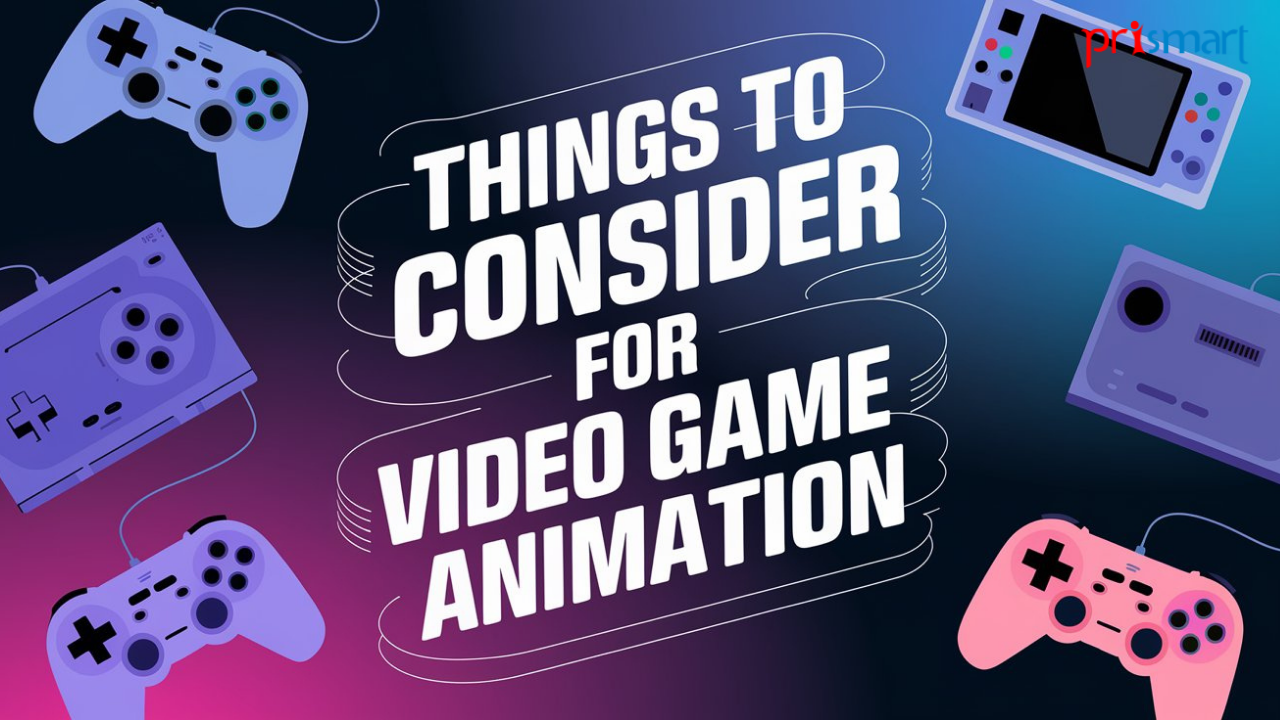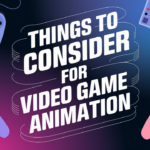Video Game Animation
Video Gaming Animation has become the most in-demand skill and expertise. Whether for e-learning or entertainment, video games are loved by all. But which is the company that creates the best video games for students? Let’s get into detail and discuss the history of video game animation, the types of video game animation, the principles of video game animation, and the factors to consider in video game animation.
The History of Video Game Animation
The first trace of Video Game Animation can be traced back to the 1970s when games like Pong and Space featured basic motion and 2D graphics. At this time, Pixel Art and Sprites dominated games like Pac-Man and Donkey Kong.
In the 1990s, video games like Doom and Wolfenstein used 3D polygonal models. 3D animation made it possible to make the characters, environments, and backgrounds of video games look realistic and more engaging. Apart from this, motion capture (mocap) also brought significant developments in the gaming experience.
Types of Animation in Video Games
3D animation is extensively used in video games to create realistic characters, environments, and visual effects. There are several types of animation used in video games such as 2D animation, 3D animation, Motion capture, and stop-motion. Explainer video services are a big hit for business promotion and simplify learning.
- Character Animation
It is used to make the movements, gestures, and actions of the characters look natural, whether they are superheroes or villains.
- Facial Animation
Facial Animation animates characters’ facial expressions, lip-syncing, and subtle movements to make them appear more believable.
- Environmental Animation
It helps create realistic landscapes, props, and architecture to build a story and stimulate audiences’ interest in the game.
- Object Animation
It is applied to props, doors, and surrounding scenery like trees and weather patterns. It improves the gameplay mechanics and makes the gaming experience more fun.
- Cutscene Animation
It helps create cinematic cutscenes, character development, and dramatic moments in a game. This further builds the game’s narrative, raises tension, and evokes emotions.
- Physics-based Animation
It works on the laws of physics to create environment effects, simulations, and real-time interactions between characters and objects.
Ten Principles of Video Game Animation
Video game animation works on 10 principles. These are as follows:
- Squash and Stretch: This principle makes movements more dynamic by giving objects a sense of weight and flexibility while they move.
- Anticipation: This principle gives hints about the next course of action by adding a small movement before the main action.
- Timing: Correct timings make things look realistic depending on the speed and rhythm of animation.
- Follow-through and Overlapping Action: This makes movements look lifelike by making parts of a character/object move naturally after the main action.
- Exaggeration: Exaggeration is done to make animations more engaging by highlighting actions and other features and to convey emotions more clearly.
- Staging: Staging arranges characters, scenes, objects, and backgrounds clearly so that there’s no confusion and the players stay focused.
- Secondary Action: Small movements are added to the main action to enhance the storytelling further.
- Arc: The Arc principle makes movements and facial expressions more believable. Here, movements follow a curved path rather than a straight line.
- Solid Drawing: This principle is focused on creating clear and balanced poses for characters to convey emotions.
- Appeal: In this, characters and their movements are made more appealing by giving them clear shapes, proportions, and features.
- Weight and Mass: This principle concerns how characters and objects move and interact in relation to their weight and mass.
- Reaction and Feedback: This helps characters or objects react to any interactions.
- Slow in and Slow out: With this principle, movements begin slowly, speed up, and then slow down again (accelerate and decelerate) for realism.
Things to keep in mind for Video Game Animation

In developing video game animations, there are several critical considerations that animators and developers need to keep in mind. These include:
- Performance and Optimization
For best performance, it is important to create low-poly models, use appropriate texturing, and rely on simplistic animations.
- Polygon count: Keeping characters and objects as low-poly models while maintaining visual appeal.
- Texture resolution: Using appropriate texture sizes for details without overloading the system.
- Animation complexity: Using simple animations to focus on essential movements without straining performance.
- Immediate Responsiveness
Responsive animations are critical to maintaining player engagement. Players expect immediate feedback when performing actions, such as jumping or attacking.
- Minimizing animation startup: Reducing frames for action like an attack or escape.
- Animation blending: Blend animations smoothly to create a more natural look. –
- Animation canceling: For a seamless gameplay experience, allow important player actions to interrupt ongoing animation.
- Style and Consistency
Animation style must align with the game’s overall aesthetic and remain consistent across characters and objects.
- Style guide: To ensure that animations meet the artistic vision, animators should follow guidelines for movement, timings, and exaggeration.
- Target audience: To meet the preferences of the player base, it is important to tailor your animation style according to them.
- Consistency: To ensure uniformity in animation design for different characters, environments, and gameplay elements.
- Gameplay Integration
Animations should always improve gameplay mechanics rather than hinder them.
- Hitboxes and collision detection: Ensuring that animations align with gameplay elements for accurate gameplay feedback.
- Telegraph actions: Using animations to signal enemy attacks or player actions, providing visual cues.
- Support for game feel: Crafting animations that reflect the weight, speed, and impact of characters’ actions.
- Reusability and Modularity
Creating reusable animations can save time and resources, especially for large game projects.
- Base animation sets: Develop animations that can be modified and repurposed for different characters or scenarios.
- Procedural animation: Leveraging algorithms to adapt animations dynamically for varied in-game situations.
- Environmental Interaction
Animations must account for interactions with the environment to make characters feel grounded in the game world.
- Surface adaptation: Adjusting character movement based on terrain types (e.g., inclines or slippery surfaces).
- Dynamic obstacles: Creating animations for interacting with objects like doors, vehicles, or environmental hazards.
- Narrative and Emotion
Character animations can be used to convey emotion, personality, and story.
- Expressive facial animations: Ensuring that characters’ faces reflect their emotions during dialogues or cinematic moments.
- Cinematic animations: Creating detailed animations for key plot moments to heighten the emotional impact.
Find the Best Video Game Animation Services for You!
Animation is a powerful tool in video games, capable of transforming static pixels into dynamic, living worlds. Game animators should create realistic, immersive, dynamic, VR, and AR-integrated games optimized for multiple devices and platforms.
Are you looking for the best gaming animation services? Contact Prismart Productions, the recognized leader in gaming animation services for over a decade. We have unique ideas, trained teams, the latest software, and expertise to create high-quality and visually stunning games. Prismart specializes in all types of game animation to bring game worlds to life.
Get in touch with the leader of game animation, Prismart, for:
- End-to-end process
- Smooth handling
- Effective communication
- High Attention
- Low Prices
- Quality Output
- Tech expertise
- Creative vision




